
Stranger of Paradise: Final Fantasy Origin is Nioh for Final Fantasy Fans, and I Think That's Great
There were two takeaways I had from Stranger of Paradise: Final Fantasy Origin's trailer, both of which weren't particularly unique to my own experience. For one, "this sure is a funky tone for a Final Fantasy game!" On the other hand, as a big fan of Team Ninja's Nioh franchise - "hey, this looks pretty familiar! Boy, does Stranger of Paradise draw inspiration from Nioh. Clearly it's using the same engine, of course, but even enemy animations, attack animations, and much more beg the comparison. Even the way that certain particle effects look, and the gear system, seem lifted straight out of Koei Tecmo's Feudal Japan-inspired Action RPG franchise.
That's all well and good, for despite all of the technical issues present with the demo, the perhaps mind-boggling story setup, and the baffling marketing for the game in general - Stranger of Paradise is a ton of fun to play, and manages to just straddle the line between feeling familiar enough to Nioh fans, while also offering its own spin on the Dark Souls-inspired genre.
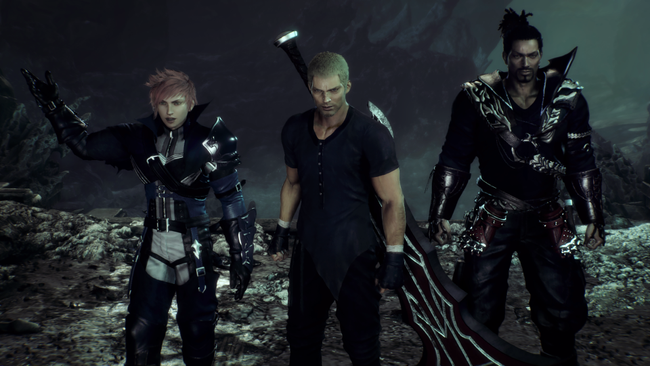
First things first, the meat and potatoes of the action. Players have access to a variety of weapon types within the demo, each with their own Job attached to them. Greatswords offer meaty, powerful swings - maces offer faster-paced slashing, while granted access to elemental magic spells to dish out against enemies, and lances act as a bit of a middle ground, with plenty of range and not quite as fast or slow attacks as the other two weapons. For every weapon, players will find that they'll start off attached to specific Classes. Greatsword starts off as Swordsmen, Mace as Mage, and Lance as a Lancer. Killing enemies will gradually level up the Classes that you have equipped, offering you the ability to invest in skill trees that will grant additional Command Abilities, Combo Abilities, Stat Buffs, and eventually access to the Advanced Job for each weapon.
While the regular attack button - whether that be R1 for the default control scheme, or Square if you opted to change the controls to the Nioh-inspired Type B controls - offers a simple combo. Some weapons, like Greatswords, offer players the ability to charge some of their attacks to deal more damage to both an enemy's health and Break gauge. Some even offer unique attacks depending to which direction the player is holding the analog stick when they smash the main attack button. While Lance offers general jabs by default, holding down on the analog stick will transform the attack into an overhead slam. Holding the stick to either the left or right will allow you to use a sweeping attack with the halberd from either direction, and holding the stick up will lead to an extended lunge that might deal heavier damage - albeit with both more wind-up and recovery frames.
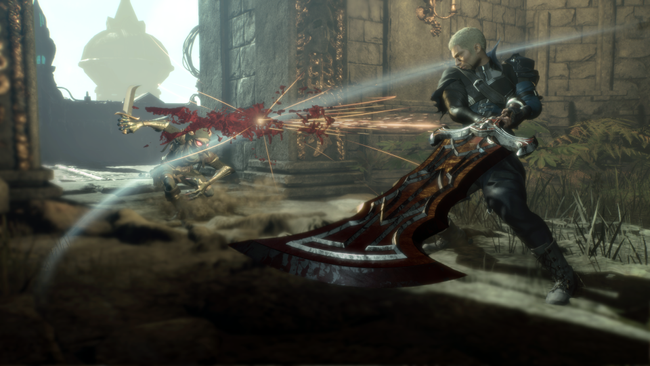
The other action button is heavily dependent on both your combo, as well as the weapons and Class/Job that you have equipped. Pressing it after a regular attack will lead to a finisher, depending on what you've unlocked from the Job Tree, and what you've opted to equip to that step of the combo. However, pressing it without any ongoing combo will active your Class or Job's unique ability. Lancer can through their Lance while Dragoons can jump, avoiding attacks and dealing plenty of damage on impact. Mages can charge up elemental spells using a weapon wheel, with the longer that the button is held, the more MP you'll require, and the stronger the tier of spell you'll eventually cast.
The end result somewhat gracefully straddles the line between a combat system that's easy enough to pickup and play, while still offering enough experimentation for expert players to mess around with. Of course, that's just the tip of the iceberg, and especially when tackling the harder difficulties in the Trial, you'll be forced to adapt to the myriad of other systems at play in the combat system.
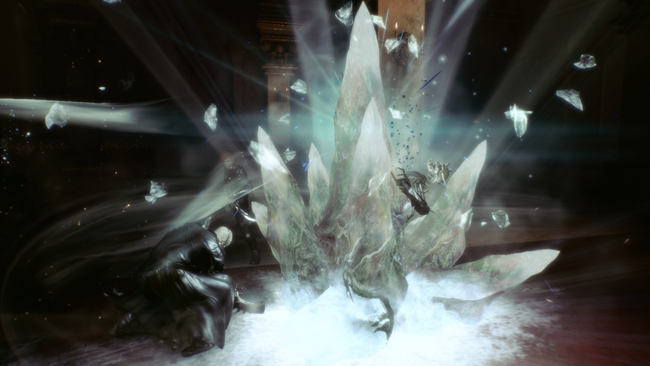
While there is a standard block button, and you can simply dodge attacks with your dash, Soul Shield offers an extra layer of interactivity that comes into play with the game's harder content. First off, some enemy attacks will be highlighted with a purple banner. If you can time your Soul Shield parry at just the right time, not only will you negate any damage, Jack will offer his best Blue Mage impression, gaining a number of spell charges for the same monster ability that he just countered. While you can't copy every move, and attacks with red banners must be dodged entirely, Soul Shield can also negate regular attacks and will help replenish your MP meter upon a successful counter.
This is important, as nearly everything that you can do in this game besides normal attacks will require MP. Class/Job specific skills, Combo Abilities, and Command Abilities all require at least 100 MP - about one segment's worth from your bar - in order to activate, and some (like higher tier magic!) will require more than that. While you will gain MP from landing regular attacks, that pales in comparison to the speed with which you can regain your meter with careful Soul Shield timing. Combine that with Lightbringer, and quickly the pieces of the puzzle start slotting into place.
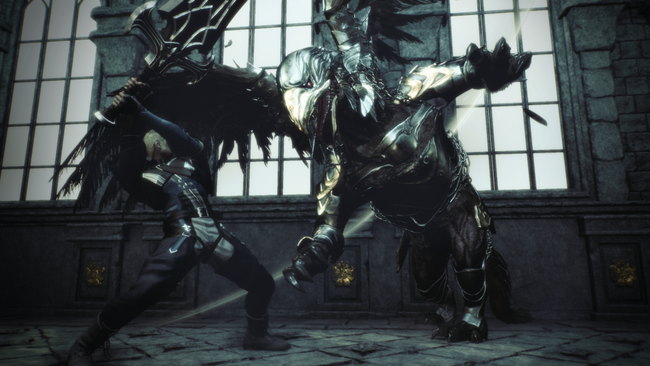
One feature of the combat system that I haven't talked about is the Break gauge. Think of it like the Ki gauge from Sekiro. You'll lose it the more you take damage, and the same goes for enemies. If your gauge breaks you'll be standing wide open for enemy attacks - but if you can manage to fully deplete the Break gauge on an enemy, you can instantly decimate them with animations that very clearly were meant to imply bloodshed, before adding red crystals to the mix somewhere down the line.
It's a ton of fun, and the way that the game's various other mechanics tie into it was constantly surprising me, even after I'd already put down Chaos(?) in the demo. Bombs will react to your Mage's fire spells, blowing up to deal plenty of carnage around them. Grass can catch ablaze, trapping wolves inside to suffer a crispy death. The final boss of the demo, with his elemental Fire and Ice phases, can take additional damage from Water and Fire attacks, respectively - sometimes even knocking him out of these phases prematurely.
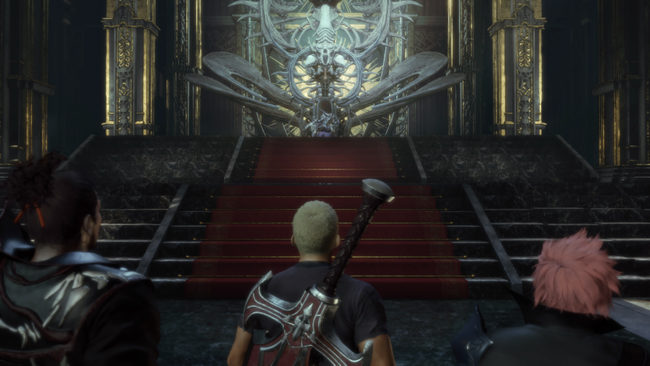
There's a lot to be said about the restrictive level design of the demo, the poor visuals for PS5, and the even more baffling performance - but even ignoring literally everything else, playing the demo has left me very excited to see where else the gameplay might lead for the final product. Team Ninja has always been masters of action gameplay, and Nioh more than proved that they're still up to the task. Stranger of Paradise might be a strange project, but you know what? You've got my interest, Square. Let's see how the full game shapes up when it launches in 2022.